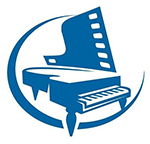In my last blog entry, I began to outline some of the ways you can be creative and add a “theme,” genre, sets or group projects to your recital offerings. Today I would like to suggest just some ideas for ensembles that can be done in your studio. When we realize just how often we as pianists are called upon to accompany students, instrumentalists, choirs and church ensembles, we need to prepare our students to do the same!
The easiest and most accessible possibility is for duets accompanied by you, the teacher. In fact, beginning with you as the accompanists can smooth the way as students need time to learn how not to correct or back up when making an error. I have found that my students are more successful playing with each other only after performing in a recital with me. I can hold back or adjust the accompaniment to allow the student some leeway in performance. This year, my studio paired 16 teams, a few of which I accompanied. Only after the students came to lessons in teams did I remember just how challenging it is to successfully teach students to stay together in the early learning of duet playing.
There are many wonderful trios (one piano, 6 hands) that can be a lot of fun, particularly with students that are friends or siblings. The parts are not difficult and yet the piece sounds very impressive. Alfred has an ensemble series with several showy pieces sure to be popular at your next recital. Piano duos require more to put together given you need 2 pianos of 2 full keyboards and students must practice at your studio or the venue to put the parts together. This will require more time in the studio for you, so consider only putting your stronger students together to avoid rehearsal bog downs.
Working with other instruments is the next step and can be a wonderful addition to a program next year. Once again, consider hiring an adult or well advanced high school violinist to work with your students to avoid the issues of putting two less experienced students together. A few years ago, I hired a violinist and cellist, paying each $50 per hour for two rehearsals and the concerts (there were two). My studio parents paid a surcharge of $25 per student. It worked out financially very smoothly. I paid very little overhead (perhaps $200) to offer every student the opportunity to play a student level trio movement–repertoire they would never experience otherwise. Joanne Haroutunnian offers the Chamber Ensemble books that she edited and offers three levels. We used levels one and two. It was such a rewarding program. The younger children played a simple piece with the ensemble simply harmonizing with them. The intermediate through early advanced students played one of the Chamber Sampler pieces (Kjos publishers). My students are already asking when we can do this again!
Once your more advancing students gain some of these experiences, you can consider pairing them with a friend of another instrumentation. Another option is to pair with a string teacher in your area and present the appropriate students in recital, either at their program or yours. Next week, I will complete the ensemble options with a discussion about concerto movements and their value and place in your studio program. Always remember that summers golden–both in teaching and planning ahead for an exciting and rewarding 2020-2021 school year!
Musically yours,
Carol Ann
